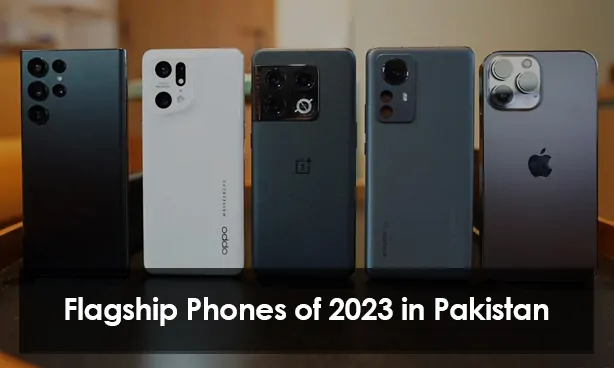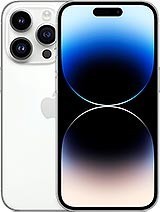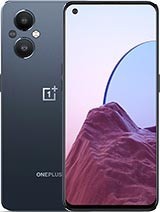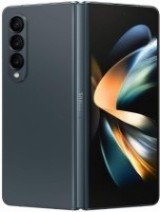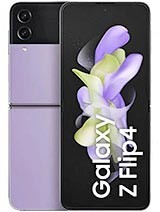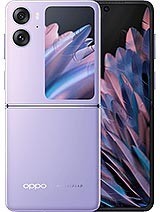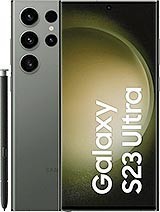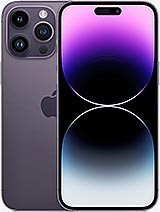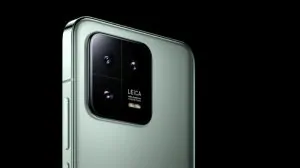The smartphone industry is off to a great start in 2023, with releases from industry heavyweights like Samsung (with its Galaxy S23 series and its top model’s jaw-dropping 200MP camera Galaxy S23 Ultra) and market upstart OnePlus (with its very polished “almost flagship” at an affordable price) as well as new foldable from Oppo and Honor that are actually on sale in more than one country. Get a sneak peek at the top flagship phones of 2023. Find the latest features, stunning designs, and cutting-edge technology on the Mobile Ki Site.
The Oppo Find X6 Pro features the same 1-inch Sony IMX989 sensor that appeared in the acclaimed Xiaomi 13 Pro and Xiaomi 12S Ultra at the year’s end. Get a sneak peek at the top flagship phones of 2023. Find out the latest features, stunning designs, and cutting-edge technology.
MKS Has Listed the Latest Phones of 2023 in Pakistan List
Apple Iphone 14 Pro
Rs.520999
It was a very difficult decision to put the iPhone 14 Pro in this position, given there are many other excellent options. If I had to choose between an iPhone and an Android flagship phones, I’d choose the Apple iPhone. The “average consumer,” for whom this list is intended, prefers the iPhone 14 Pro because it offers the best balance of performance, price, and accessibility.
Apple’s latest iteration of the Pro iPhone features a more refined screen cutout design than in prior years, ditching the notch in favor of a pill-shaped cutout. A new user interface feature, “dynamic island,” is also added to the cutout; it creates the impression that the cutout can change its size and shape in response to user input.
Oneplus 11
Rs.147999
The OnePlus 11 revives the high-end aesthetic of the OnePlus 10 Pro by incorporating a camera module made of stainless steel, which matches the phone’s aluminum frame. The 120 Hz LTPO 3.0 OLED display is beautiful and efficient, the software is as quick as ever, and the triple camera system is unexpectedly good, with correct colors and a rapid shutter. In particular, the 50MP main camera competes favorably with industry leaders and, in many cases, achieves superior exposure control than even the most recent iPhone.
While its 2x zoom lens isn’t as long as those of competing smartphones, its huge 1/1.56-inch sensor makes for excellent bokeh in portrait mode and allows it to take in more light overall.
Google Pixel 7
Rs.144999
The Google Pixel 7 is an upgraded flagship phone version of the Pixel 6, featuring a Google-designed Tensor G2 chip that significantly improves the device’s machine learning capabilities over its predecessor. The display’s FHD+ resolution and superb color output make up for its “only” 90Hz refresh rate. Its 6.3-inch screen size is less than that of the Pixel 6, making it easier to use with one hand. Similar to the Pro, this setup has a dual camera setup consisting of a primary sensor with 50MP and a secondary sensor with 12MP for ultra-wide shots. And both of them are excellent.
Samsung Galaxy A54
Rs.140999
When compared to Samsung’s prior mid-range A-series products, the Samsung Galaxy A54 is a huge upgrade. The frame is made of plastic. However, the front and rear are made of real Gorilla Glass. You get a stunning 120Hz OLED screen and a powerful 50MP, f/1.8 primary camera for $450. The ultra-wide lens is also reliable, but the macro lens is largely unnecessary.
Oneplus Nord N20 5G
Rs.57999
The OnePlus Nord N20, at $249, is a wonderful choice for shoppers on a tight budget. You get a 5G-ready phone with a strong primary camera and a beautiful design for a fraction of the iPhone 13 Pro Max or Galaxy S22 Ultra cost.
The 60Hz refresh rate of the 6.4-inch screen may be disappointing, but at least it’s an OLED panel, which means vivid colors. The 60Hz display also helps the 4,500 mAh battery survive all day, and if you do run low, you can always use the included 33W fast-charging brick. There’s also support for 5G networks and a connector for headphones.
Samsung Galaxy Z Fold 4
Rs.350000
The Samsung Galaxy Z Fold 4 flagship phone only offers incremental improvements over last year’s model, adding to a more refined and complete smartphone. To begin with, the Galaxy Z Fold 4’s hinge sticks out much less, making the device easier to grasp when folded.
It’s easier to carry and use thanks to its low weight and somewhat larger screen in comparison to its predecessor.
Samsung Galaxy Z Flip 4
Rs.332999
The Galaxy Z Flip 4 is one of the most attractive flagship phones because of its two-tone design and array of available hues. The Flip 4’s clamshell design allows it to be compacted into a package about the size of a makeup compact or a set of coasters.
You can’t judge its strength by its appearance. With IPX8 water resistance and “Armour Aluminium” construction, the Z Flip 4 and the Fold 4 are the most robust folding phone ever.
Oppo Find N2 Flip
Rs.189999
Compared to Samsung’s Flip 4, the Oppo Find N2 Flip is a superior clamshell foldable flagship phone in some respects. The battery life, main camera quality, and display size of Oppo’s phone are all superior to those of its competitors. In addition to being flat when folded, the screen hinge is nearly invisible. Unfortunately, we had to place it behind Flip 4 for a few reasons.
While the Samsung foldable is still widely available, the availability of the Find N2 Flip varies from country to region. Unlike the Find N2 Flip, the Flip 4 has been certified as being water-resistant thanks to its official IP classification.
Google Pixel 7 Pro
Rs.209999
The Google Pixel 7 Pro includes a powerful camera system, including a 50MP main camera with a huge image sensor. This 5x Periscope zoom lens can use in-sensor cropping to produce a nearly 10x optical zoom and a wide-angle ultra-wide camera. The Google Tensor G2 processor, though, is the real MVP here.
To analyze the image data acquired by the lenses and create photographs with outstanding dynamic range, details, and clarity, Google’s second-generation silicon makes use of Google’s formidable machine-learning prowess.
Action Pan, which uses Google’s machine learning to produce motion blur effects around objects which may be barely moving, and Night Sight, which uses machine learning to suck in light in dim settings miraculously, are just two examples of the clever photographic tricks made possible by Google’s machine learning.
Samsung Galaxy S23 Ultra
Rs.382998
As the only widely available phone with a 10x optical zoom (Huawei has two phones with a 10x zoom lens too, but they were mostly sold in China), Samsung’s Galaxy Ultra series has held the “most versatile” title for three years running. The Samsung Galaxy S23 Ultra improves upon its predecessor by using a 200MP sensor in its primary camera.
This enables the device to employ 16-in-1 pixel binning for additional computational wizardry and permits an in-sensor crop to reach even another near-optical zoom length. It’s highly doubtful that any other phone released in North America this year will be able to compete with the versatility of this one.
Apple Iphone 14 Pro Max
Rs.564999
Although Dynamic Island, which replaces the notch on the iPhone 14 Pro Max, has been criticized, we at XDA find it an innovative and exciting way to engage with the vast amounts of data we collect on a daily basis. A new 48MP main camera that takes pixel-binned 12MP photographs and slightly larger image sensors for the ultra-wide camera has improved the camera’s performance.
Because of this, the iPhone 14 Pro Max can capture detailed images even in low-light conditions. In truth, there are instances when the images are overly bright, but you can adjust this in the settings. Apple’s new “Action Mode” for the iPhone 14 Pro Max’s EIS improves stabilization over its already impressive previous iteration.
Asus Zenfone 9
Rs.149999
If you’re looking for a compact Android phone, go no further than the Asus Zenfone 9. The Zenfone 9’s 5.9-inch OLED display, slim profile (146.5 x 68.1 x 9.1 mm), and lightweight (165 grams) make it a pleasure to use with only one hand. The 5.4-inch display of the iPhone 13 mini is too small, in the opinion of many of us here at XDA, making the 5.9-inch display of the Zenfone 9 the ideal “small” size.
Asus Rog Phone 7 Ultimate
Rs.184999
The ASUS ROG Phone 7 Ultimate is the best option currently available for mobile gamers. The name of this device suggests that it is the pinnacle of gaming smartphones. It features a cutting-edge set of internals and an aesthetically pleasing design to match. The design is largely unchanged from last year, which is a plus because neither of these phones draws attention to the fact that they are intended for gaming.
Powered by a Qualcomm Snapdragon 8 Gen 2 chipset and paired with 16GB of RAM and 512GB of UFS 4.0 storage, the ASUS ROG Phone 7 Ultimate is a top-tier smartphone. In addition, the front display is a gorgeous 6.78-inch OLED panel that can reach a refresh rate of 165 hertz and a brightness of 1,500 nits. As you can see, this phone packs some serious hardware, and ASUS even throws in an AeroActive Cooler 7 as a free bonus.
The Rise of Flagships Phones in Pakistan:
Pakistan, traditionally seen as a market for mid-range and budget smartphones, has seen a notable shift in recent years. With increasing purchasing power, exposure to global trends, and the country’s youth’s tech-savviness, there’s a growing appetite for flagship devices. Brands like Apple, Samsung, and Huawei, previously focusing on their mid-tier offerings, have noticed this trend. As a result, they are now actively promoting their premium models in the country. Moreover, local telecom operators have begun offering attractive packages and deals for flagship phones, further fueling their popularity. The success of flagship launches in metropolitan cities like Karachi, Lahore, and Islamabad is a testament to this rising trend. It’s not just about the phone’s features; owning a flagship has become a status symbol, a way to make a statement.
User Trends and Preferences:
Pakistani users are becoming more discerning in their smartphone choices. Camera quality stands out as a top priority, especially with the younger demographic’s rising interest in photography and content creation for platforms like Instagram and TikTok. There’s also a significant focus on build quality, with users preferring metal and glass designs over plastic builds. Long battery life, due to frequent power outages in many areas, remains crucial. Additionally, brand loyalty plays a role, with Apple and Samsung enthusiasts eagerly awaiting each new release. Interestingly, despite the appeal of flagship phones, price-to-performance ratio remains a key consideration, leading to the success of flagship killers, which offer top-tier specs at a slightly reduced price.
Challenges & Considerations:
Despite the rising demand for flagships, Pakistan’s smartphone market isn’t without its challenges. For one, the higher import duties and taxes can significantly inflate flagship phone prices, making them inaccessible to many. There’s also the issue of counterfeit and gray market devices, which might be sold at a lower price but come without warranties or the assurance of authenticity. PTA’s (Pakistan Telecommunication Authority) DIRBS system, which aims to regularize mobile devices and curb illegal imports, has been a step in the right direction. Still, consumers need to be aware and ensure they’re buying PTA-approved devices. Additionally, after-sales service and support remain concerns. While brands are expanding their service centers, the quality and speed of service can be inconsistent.
The Future of Flagship Phones in Pakistan:
Looking ahead, the flagship market in Pakistan is poised for growth. As 5G networks start rolling out, there will be a push for 5G-capable flagships. Additionally, as the digital payments landscape expands, phones with enhanced security features, like advanced biometrics, will be in demand. We can also anticipate a rise in local content and apps optimized for the Pakistani audience, leading brands to consider Pakistan-specific customizations in their flagships. However, for sustained growth, addressing challenges like pricing, authentic sales channels, and improving after-sales service will be critical.
Best cell phones of 2023 are Summarized
There are many great phones on this list. Still, the iPhone 14 Pro is the finest all-around option due to its global availability, superior CPU and screen, and extensive support for third-party apps and accessories. Even though we prefer Android devices, we must admit that it is much simpler to locate add-ons and apps that are compatible with the iPhone than with a Pixel. When compared to Android phones, the iPhone 14 Pro has superior resale value and extended software support.
That, of course, was the most convenient option available to shoppers. The Pixel 7 Pro is the best smartphone camera out there, and if you’re a techie who wants something more interesting, purchase one. Alternatively, the Galaxy Z Fold 4 offers a wider range of functionality.
FAQs
What are flagship phones?
Flagship phones are the top-tier, most advanced, and often most expensive smartphones a manufacturer makes. They represent the company’s best technology and features in a mobile device. These phones are designed to showcase the company’s brand in the best possible light. Examples include Apple’s iPhone 14 Pro Max, Samsung’s Galaxy S23 Ultra, and Google’s Pixel 7 Pro.
Which is the cheapest flagship phone?
The title of the cheapest flagship phone can change rapidly as new models are released, and older ones receive price cuts. Some of the more affordable flagship phones are from brands like Xiaomi and OnePlus, which offer high-end specifications at a lower price compared to brands like Apple and Samsung. However, you’d need to check the latest prices and models for the most accurate information.
What is a flagship killer phone?
A “flagship killer” phone is a term often used to describe a smartphone that offers high-end specs and features comparable to those of flagship phones but at a significantly lower price. OnePlus popularized the term with their early devices, which offered specifications similar to those of flagship devices from brands like Samsung and Apple, but at a much more competitive price point.
What is the difference between a flagship phone and a normal phone?
The main difference between a flagship phone and a normal (or mid-range) phone lies in their specifications, build quality and price.
Flagship phones have the latest and most powerful hardware, like high-resolution screens, top-of-the-line processors, significant amounts of RAM, advanced camera systems, and premium materials like metal or glass bodies. They also offer extra features like water resistance, wireless charging, and face recognition. They represent the latest technology and innovation from the manufacturer and come with a premium price tag.
On the other hand, normal phones, often called mid-range phones, offer good value for money, providing decent performance and features that fulfill the needs of most users. They may not have the most advanced processors or the highest-resolution cameras. Still, they are usually sufficient for everyday tasks like browsing the web, using social media and taking casual photos. They are typically housed in less expensive materials and may lack some of the extra features found in flagship models. They are usually much more affordable than flagship phones.
